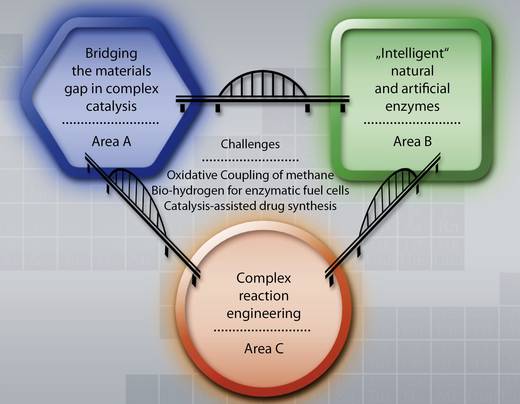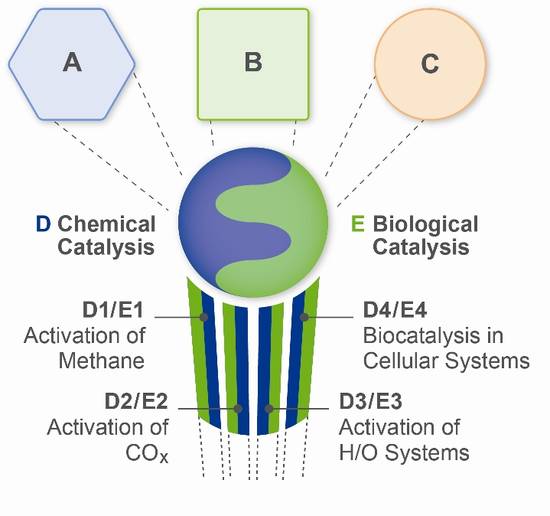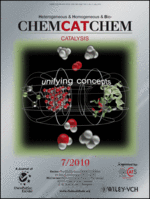Research Achievements 2007 - 2011
The following section outlines concisely the major achievements of each Research Field with respect to added-values through topical interaction and referring to selected theme-relevant publications.
In Area A, the central challenge was to explore how the performance of catalytic materials varies depending on different length scales and in different molecular environments.
A1: Bridging model systems to real catalysis: oxidative methane coupling
A2: Tailoring metal-support interactions
A3: Hierarchically organised solid catalysts
A4: Consecutive catalysis for fine chemical synthesis
A5: Linking homogeneous and biocatalysis
In Area B, the mechanisms of biocatalytic processes of intriguing redox-, light- and voltage-“powered” enzymes were investigated at molecular and cellular levels.
B1: Photosynthetic water oxidation, light driven H2 production, hydrogenase-based biofuel cells
B2: Structure-function analysis of oxygen tolerant hydrogenases
B3: Cofactor insertion and functional investigations on complex molybdoenzymes
B4: Light- and voltage-gated enzymes
B5: Bioelectronic building blocks
In Area C, the novel catalytic systems developed in areas A and B are scaled up and tested on the mini-plant level, thereby developing novel reactor types and methodologies for process design.
C1: Processing of solid catalysts
C2: Biocatalysis and process techniques
C3: Process simulation with hierarchic models
C4: Design of integrated catalytic processes
Development of Research Structure since 2011
Based on our research achievements until 2011, the organisation of the research programme is shifted from a competence-oriented to a target-oriented structure that allows for elucidating complex catalytic processes in a more efficient and comprehensive manner.
The former Areas A, B, and C are merged into two new areas devoted to Chemical (Area D) and Biological Catalysis (Area E). The projects in both areas are intertwined to form four Research Bands.



